Introduction
Why Are Ferrets So Flexible: Ferrets, those captivating and playful members of the Mustelidae family, have long intrigued scientists and animal enthusiasts alike with their remarkable flexibility. These small, carnivorous mammals are renowned for their ability to contort their bodies into seemingly impossible positions, often leaving observers in awe of their agility. To unravel this fascinating mystery, we must delve into the intricate biology and evolution of these charming creatures, exploring the unique adaptations that enable them to exhibit such remarkable flexibility in their movements and behaviors. In this exploration, we will uncover the physiological and behavioral aspects that make ferrets one of nature’s most agile and captivating animals. The exceptional flexibility of ferrets eat is a testament to the intricate interplay between their anatomy, behavior, and evolutionary history. While these slender creatures may appear to be built for agility, there are several key factors contributing to their remarkable flexibility.
First and foremost, ferrets possess a long, sinuous body with a remarkable number of vertebrae, particularly in the spine. This abundance of vertebrae allows for a greater degree of spinal articulation, enabling them to twist, turn, and bend with remarkable ease. Their elongated bodies, combined with a lack of a fixed collarbone, provide ferrets with unparalleled freedom of movement in their shoulders, allowing them to squeeze through narrow openings and explore even the tightest spaces. Beyond their physical attributes, ferrets are naturally curious and highly adaptive animals. Their inquisitive nature drives them to explore and navigate various environments, which further enhances their flexibility as they learn to navigate obstacles and adapt their bodies to suit their surroundings.
Additionally, ferrets have evolved as opportunistic hunters, often pursuing prey in tight burrows or tunnels. This predatory behavior has favored the development of a flexible body, as it allows them to chase down prey and maneuver through complex underground passages. Over time, these hunting and burrowing behaviors have further honed their ability to contort and twist their bodies as needed. In summary, the flexibility of ferrets is a remarkable combination of their anatomical structure, behavioral traits, and evolutionary history. Their adaptability and curiosity, combined with a highly flexible spine and body, make ferrets truly exceptional creatures when it comes to navigating the world around them. Understanding the factors behind their flexibility not only deepens our appreciation for these captivating animals but also sheds light on the fascinating ways in which evolution shapes the form and function of life on Earth.
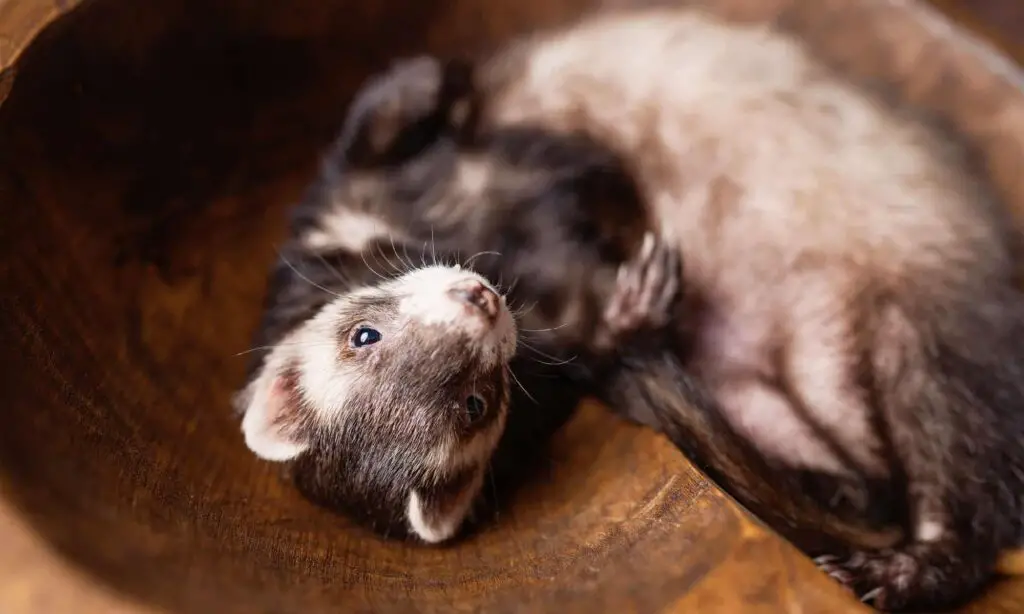
Why are ferrets bodies so long?
Their long slender body and strong claws allow it to exploit burrows and tunnels in search of prey. Anatomical: Extremely flexible and highly agile ferrets are known for being able to find their way into nooks and crannies in search of their prey.”
Predatory Adaptation: Ferrets are natural hunters, and their elongated bodies are an adaptation that aids in their hunting abilities. A long body allows them to enter and navigate burrows, tunnels, and other tight spaces where their prey might hide. This adaptability is especially useful when pursuing small rodents, which often take refuge in narrow underground passages.
Flexible Spine: Ferrets possess a highly flexible spine with a larger number of vertebrae than many other animals of similar size. This increased number of vertebrae, especially in their thoracic and lumbar regions, gives them exceptional flexibility. This flexibility enables them to twist, turn, and bend their bodies with ease, allowing them to chase prey, evade predators, and access hidden places.
Narrow Shoulders: Unlike some other mammals, ferrets have relatively narrow shoulders and a lack of a fixed collarbone (clavicle). This skeletal feature allows for greater freedom of movement in their shoulder joints, facilitating their ability to squeeze through tight openings and burrows.
Carnivorous Diet: Ferrets are obligate carnivores, primarily feeding on small mammals, birds, and other protein-rich prey. Their long bodies are adapted to efficiently process and digest animal proteins. The length of their intestines and digestive system allows for the extraction of nutrients from their prey, which is essential for their survival.
Do ferrets have flexible bones?
Overall the vertebral column is long and very flexible, which allows a ferret to go into a narrow tunnel, do a U-turn and come back out. The bones of the front arms are light and short. They also have a small diameter. The radius and ulna (forearm) are slightly bowed.
Joint Flexibility: Ferrets have highly flexible joints that allow them to move with agility and dexterity. Their limb joints, including the shoulders, elbows, hips, and knees, are designed for a wide range of motion. This flexibility is essential for their hunting and burrowing behaviors, as it enables them to twist, turn, and navigate through tight spaces.
Lack of Collarbones (Clavicles): One notable skeletal feature of ferrets is their lack of fixed collarbones (clavicles). This absence of clavicles allows for more freedom of movement in their shoulder joints, making it easier for them to squeeze through narrow openings and burrows. Clavicles in other animals often restrict shoulder mobility, but ferrets’ shoulder blades are relatively unattached, enhancing their flexibility.
Vertebral Structure: Ferrets have a larger number of vertebrae in their spine compared to many other mammals of similar size. This increased number of vertebrae, particularly in the thoracic and lumbar regions, contributes to their spine’s flexibility. Their spinal column is highly articulated, allowing for a significant range of motion, which is advantageous for their burrowing and hunting activities.
Muscular Adaptations: Ferrets have well-developed and highly flexible muscles. These muscles play a crucial role in their flexibility, as they work in conjunction with the skeletal structure to allow for a wide range of movements. The muscles help ferrets twist, bend, and contort their bodies as needed.
Do ferrets have no fear?
Ferrets definitely react strongly to fear. They can hiss, screech, or release a very unpleasant stench. If your ferret is exhibiting any of these signs, remove him from the vicinity of whatever it was that caused this reaction, and put him back in his cage.
Variability in Temperament: Just like people, ferrets have different personalities. Some ferrets may be naturally more fearless or bold, while others may be more timid or cautious. This variation in temperament can influence how they respond to potentially frightening situations.
Sensitivity to Environment: Ferrets are sensitive animals that can be easily startled or stressed by sudden loud noises, unfamiliar people or animals, or new environments. In these situations, they may exhibit behaviors that indicate fear, such as cowering, hiding, or attempting to escape.
Social Creatures: Ferrets are social animals and often find comfort in the company of other ferrets and their human caregivers. Having a familiar and secure social group can help mitigate fear and stress. Solitary confinement or isolation can lead to increased fear and anxiety in ferrets.
Trust and Training: Through positive interactions and training, ferrets can build trust with their human caregivers, which can help them feel more secure and less fearful in their presence. A well-socialized ferret is generally more confident and less prone to fear-related behaviors.
How hard do ferrets bite?
“Adult ferret teeth puncture human skin very easily,” Troutman said, “and although the ferret means no harm, because it was taught to play like that, it could create problems—especially if children live in the house.” One of the best ways to prevent bites is by reading your ferret’s body language to gauge its mood.
Temperament: Individual ferrets have different temperaments. Some may be naturally more gentle and less prone to biting, while others may be more spirited or excitable, leading to occasional firmer bites. Early socialization and positive experiences with humans can help temper their behavior.
Training and Socialization: Proper training and socialization play a crucial role in determining how hard a ferret bites. Well-socialized ferrets that have been handled regularly and exposed to various people and situations from a young age are more likely to have gentler bites. Training can also teach them bite inhibition, helping them understand the appropriate level of force when interacting with humans.
Play Behavior: Ferrets often engage in rough play with each other, which can involve gentle nipping and wrestling. This behavior is a natural part of their social interactions. When playing with humans, they may sometimes mimic this behavior, but it is typically not intended to cause harm.
Fear or Aggression: In certain situations, ferrets may bite harder out of fear or aggression. If a ferret feels threatened, cornered, or provoked, it may bite more forcefully as a defense mechanism. It’s essential to avoid putting ferrets in situations where they feel threatened.
Why do ferrets kiss you?
Just as in humans, your ferret kissing you on the lips can be a sign of affection. It can also mean that your ferret likes the flavor of your lip balm or of the turkey sandwich that you had for lunch.
Scent Marking and Grooming: Ferrets are naturally social and curious animals, and part of their social bonding involves grooming one another. When a ferret “kisses” you, it’s often a form of grooming behavior. Ferrets are drawn to the scent of their favorite humans and may want to groom you as a way of bonding and showing affection.
Recognizing You: Ferrets have an excellent sense of smell and can identify their human caregivers by scent. When they “kiss” you, they may be trying to recognize and reaffirm their bond with you. This behavior is a sign that they trust and feel comfortable with you.
Affection: Ferrets are known for their affectionate nature. When they “kiss” you, it’s a way for them to express their love and attachment. It’s their version of a hug or a cuddle. Ferrets often seek physical closeness with their favorite humans and enjoy being near them.
Communication: Ferrets communicate through body language, including grooming and “kissing.” When a ferret licks or nuzzles you, it can be a way of saying, “I like you,” or “I want to play.” They may also “kiss” you to get your attention or request interaction.
Do ferrets feel pain?
Remember, ferrets feel pain in the same way we do and changes in their behaviour can be early signs of illness or pain. Finally, it’s worth taking out pet insurance to ensure your ferrets are covered for vet treatment if needed.
Nervous System: Ferrets, like humans and most animals, have a nervous system that allows them to perceive and respond to various stimuli, including pain. This system includes nerve receptors, the spinal cord, and the brain, which work together to transmit and process pain signals.
Pain Sensitivity: Ferrets have varying levels of pain sensitivity, which can be influenced by factors such as age, genetics, and overall health. Younger ferrets, for example, may be more resilient to pain than older individuals. It’s essential to be attentive to signs of discomfort in ferrets, as they may not always vocalize their pain.
Signs of Pain: Ferrets may exhibit various signs of pain, including vocalization, changes in posture, reduced activity or mobility, reluctance to eat or drink, and increased aggression or irritability. These signs can vary depending on the source and severity of the pain.
Causes of Pain: Ferrets can experience pain due to a variety of reasons, including illness, injury, dental problems, gastrointestinal issues, infections, and surgery. Regular health check-ups and prompt veterinary care are essential to identify and address the underlying causes of pain in ferrets.
What are ferrets scared of?
Ferrets are fearless.
Ferrets, to their benefit or detriment, are not afraid of anything! This makes them great friends for cats, dogs, and other ferrets. It also makes them dangerously curious – so be sure you ferret-proof your home before playtime!
Loud Noises: Ferrets have sensitive hearing, and sudden loud noises, such as thunderstorms, fireworks, vacuum cleaners, or loud music, can startle and frighten them. It’s essential to provide a quiet and secure space for them during noisy events.
Sudden Movements: Ferrets can be cautious around quick and unpredictable movements. Sudden gestures or motions may make them feel threatened or anxious. Slow, gentle movements when handling or interacting with them can help them feel more at ease.
Strangers: Ferrets are typically more comfortable with familiar people and may be wary of strangers. Introducing new individuals to your ferret should be done gradually and in a calm manner to avoid causing undue stress.
Large or Dominant Animals: Ferrets are small animals, and encounters with larger or more dominant animals, such as dogs or cats, can be intimidating for them. Supervised introductions and ensuring that your ferret has a safe retreat space can help ease their fear.
Are ferrets loyal pets?
A pet ferret can be one of the most loyal, cuddly, and loving pets available but could also be one of the most finicky. With a shorter lifespan of just 8 to 10 years, it is recommended that ferrets be spayed or neutered to prevent major health risks that would shorten their lives even more.
Bonding: Ferrets are social animals that form strong bonds with their human caregivers and, in many cases, with other ferrets. When provided with love, attention, and social interaction, ferrets develop a sense of trust and attachment to their owners. They often seek out human companionship and enjoy being close to their owners.
Affection: Ferrets are known for their affectionate behaviors, including “kissing” (grooming), cuddling, and playfulness. These actions are often seen as expressions of loyalty and attachment. Ferrets may show their loyalty by seeking out their owners for companionship and seeking comfort from them.
Recognition: Ferrets have an excellent sense of smell and can identify their human caregivers by scent. They often recognize and respond positively to their owners, which is seen as a sign of loyalty. Ferrets may become more excited and playful when they see or smell their favorite humans.
Attachment and Trust: Loyalty in ferrets can be closely related to their trust in their owners. When ferrets feel safe and secure with their caregivers, they are more likely to demonstrate loyalty by seeking out their presence and showing affection.
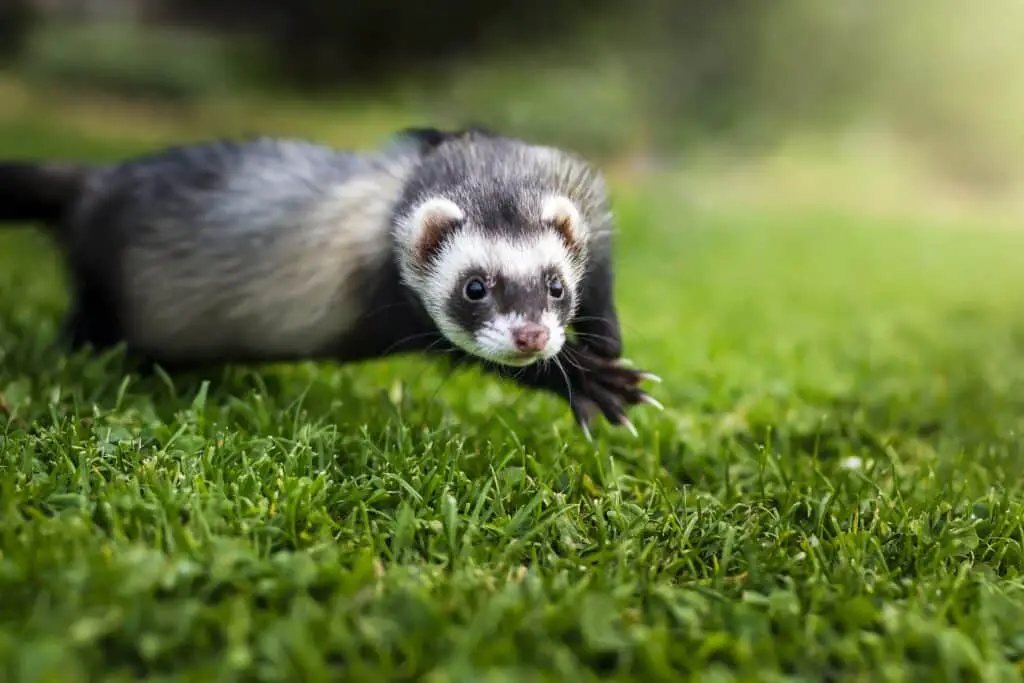
Conclusion
These remarkable creatures have evolved over time to possess a sinuous body with numerous vertebrae, allowing them to twist and bend with unparalleled agility. Their adaptability and curiosity drive them to explore and adapt to various environments, further enhancing their flexibility. Additionally, their history as opportunistic hunters in tight spaces has honed their ability to maneuver through complex passages. The extraordinary flexibility of ferrets spines not only showcases the marvels of nature’s adaptations but also serves as a testament to the remarkable diversity of life on Earth. As we continue to study and appreciate these charming animals, we gain a deeper understanding of the intricate ways in which biology and evolution work together to shape the form and function of the animal kingdom.
Ferrets, with their unique flexibility, remind us of the wonders that await discovery in the natural world and the importance of preserving and protecting the biodiversity that surrounds us. Furthermore, the flexibility of ferrets has practical applications beyond mere curiosity and admiration. It has made them invaluable companions to humans, as their slender bodies can be trained to perform specific tasks, such as searching for hidden objects or navigating through tight spaces in rescue operations. Their adaptability and flexibility have also contributed to their popularity as pets, endearing them to countless households around the world. In a broader context, the study of ferrets’ flexibility sheds light on the broader principles of adaptation and evolution. It underscores the idea that animals evolve in response to their environment and the challenges they face.
In the case of ferrets, their ability to contort their bodies has evolved as a survival strategy, enabling them to access food, evade predators, and thrive in a variety of ecological niches. In summary, the extraordinary flexibility of ferrets is not only a fascinating aspect of their biology but also a testament to the intricacies of nature’s design and the adaptability of life itself. It serves as a reminder of the countless marvels waiting to be discovered in the natural world and underscores the importance of preserving biodiversity and the remarkable creatures that inhabit our planet. Ferrets, with their unique blend of physical attributes and behaviors, continue to captivate our imagination and enrich our understanding of the natural world.

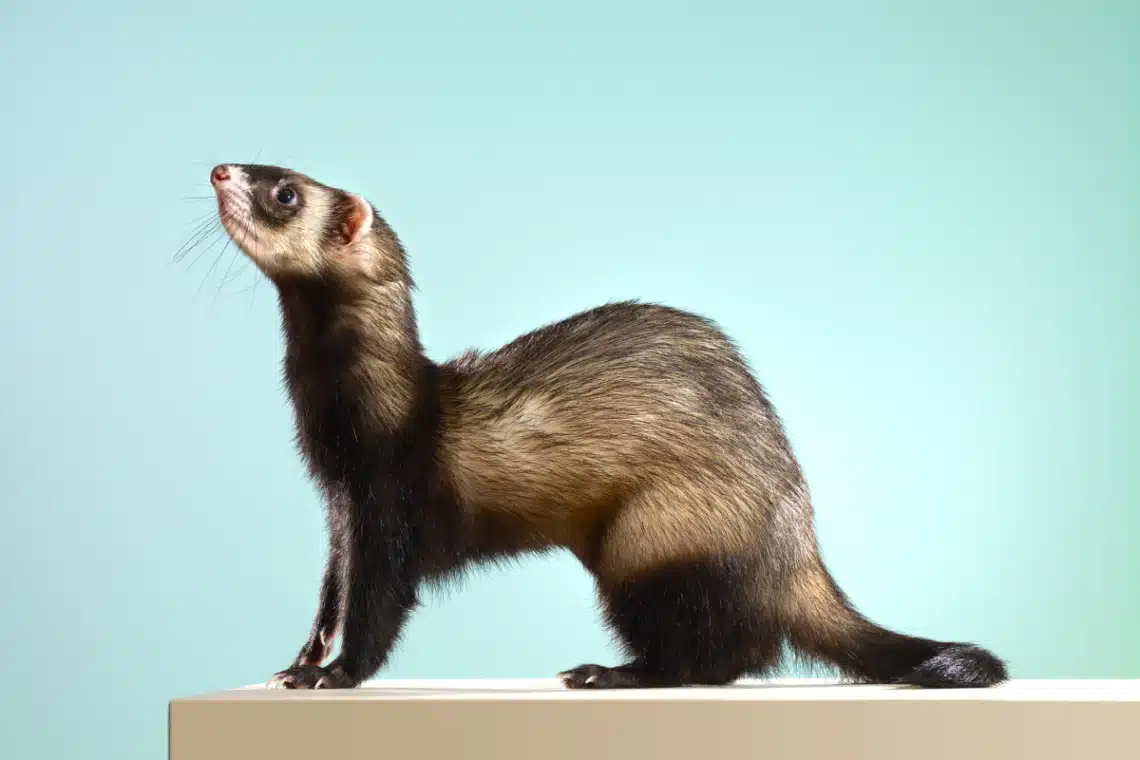
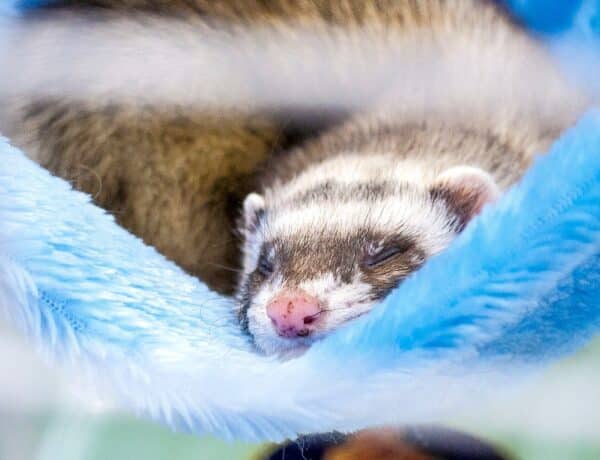
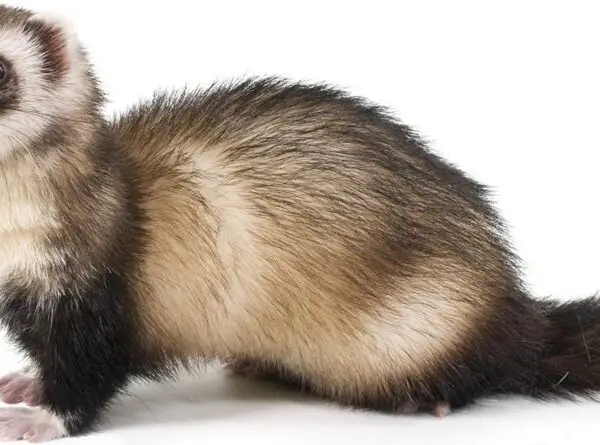
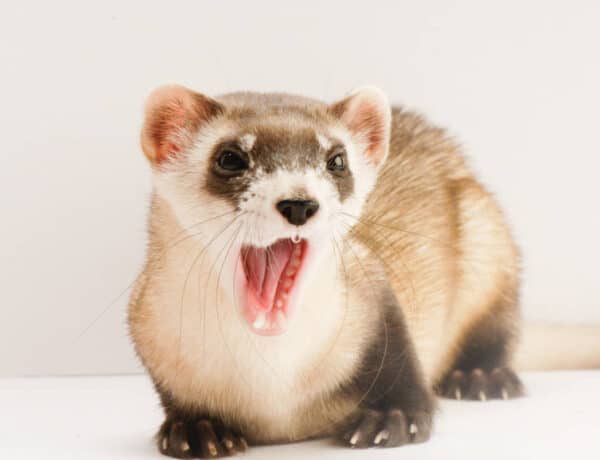
No Comments